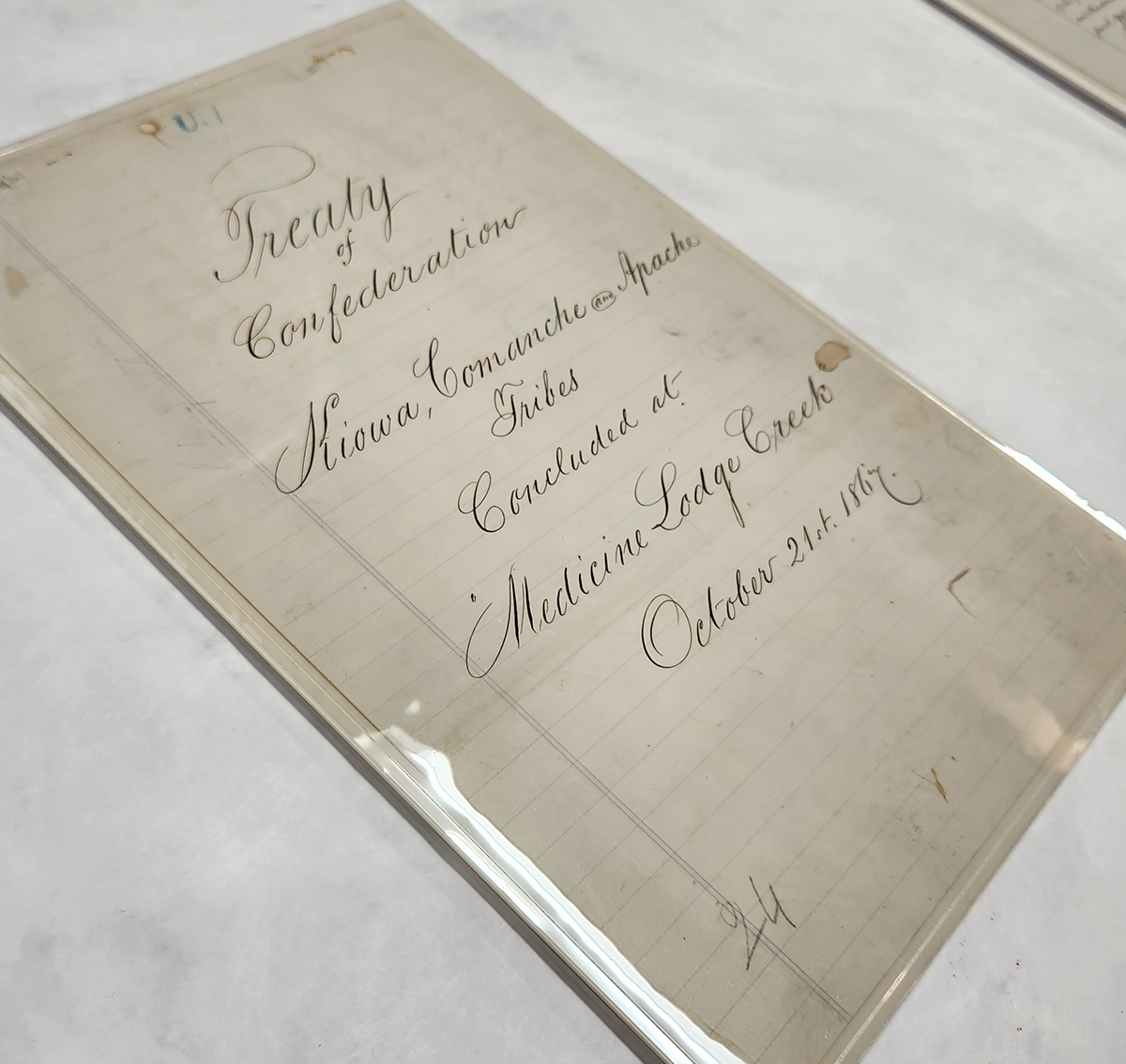
Medicine Lodge Creek Treaty on View at NMAI
By Angela Tudico | National Archives News
WASHINGTON, November 28, 2023 — The Treaty of Medicine Lodge Creek (1867) is currently on view at the National Museum of the American Indian (NMAI) as part of their Nation to Nation: Treaties Between the United States and American Indian Nations exhibit.
A delegation of commissioners from the U.S. Government and representatives from Tribes that lived on the Central Plains met in southern Kansas in October 1867 and negotiated the Treaty of Medicine Lodge Creek. The Kiowa, Comanche, and Plains Apache (now the Apache Tribe of Oklahoma) ceded over 60,000 square miles (nearly 40 million acres) of territory north of the Arkansas River and agreed to reside on a three-million-acre reservation in present-day Oklahoma.
Installed on October 17, this is the 18th treaty to be displayed through a loan from the National Archives to NMAI as part of a continuing partnership between the two institutions that began in 2014. The treaty will be on display through April 2024.
“Since 2014, when Nation to Nation opened, the National Archives has loaned the museum 18 original treaties between the U.S. Government and Indian Nations,” said William J. Bosanko, Chief Operating Officer for the National Archives and Senior Agency Official for Tribal Consultation and Tribal Liaison. “With the exhibit now entering its 10th year, the National Archives is proud to continue this partnership and increase public access to these important records.”
“While this started as a four-year run with eight treaties, the success of this impactful exhibition led to an extension of the treaty loans,” said Executive for Research Services Chris Naylor. “This partnership has allowed millions of visitors to view and learn about these important documents.”
The National Archives holds other documents essential to understanding this history, notably the landmark Supreme Court case Lone Wolf v. Hitchcock. Kiowa chief Lone Wolf brought charges against the government for violating the tenets of the Medicine Lodge Creek Treaty after government officials returned in 1892 to divide the reservation into 160-acre parcels, one per household. Authorized by Congress via the General Allotment Act of 1887, also known as the Dawes Act, the government intended to sell the remainder of the three million acres.
In 1903, the Supreme Court ruled against Lone Wolf and the Tribes. The decision stated the government had the right to cancel treaties with Native Americans and to dissolve the Kiowa, Comanche, and Apache Reservation.
“In connection with the display of the Treaty of Medicine Lodge Creek at the National Museum of the American Indian, we recently digitized the landmark 1903 Supreme Court Case Lone Wolf v. Hitchcock,” Naylor said. “This is part of ongoing efforts to make not only the treaties but other records important to Native Americans more accessible for research and education.”
Since its establishment in 1789, the Supreme Court has heard and decided numerous cases impacting American Indians and Alaska Natives. The Lone Wolf v. Hitchcock Supreme Court ruling is now available online through the National Archives Catalog.
The 374 ratified Native American treaties held by the National Archives were digitized in collaboration with the National Archives Foundation and an anonymous donor. The treaties may be viewed in the National Archives Catalog and through the Indigenous Digital Archive’s Treaties Explorer.
